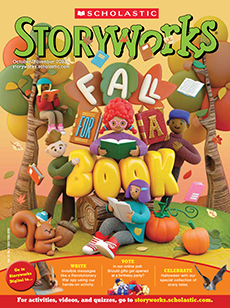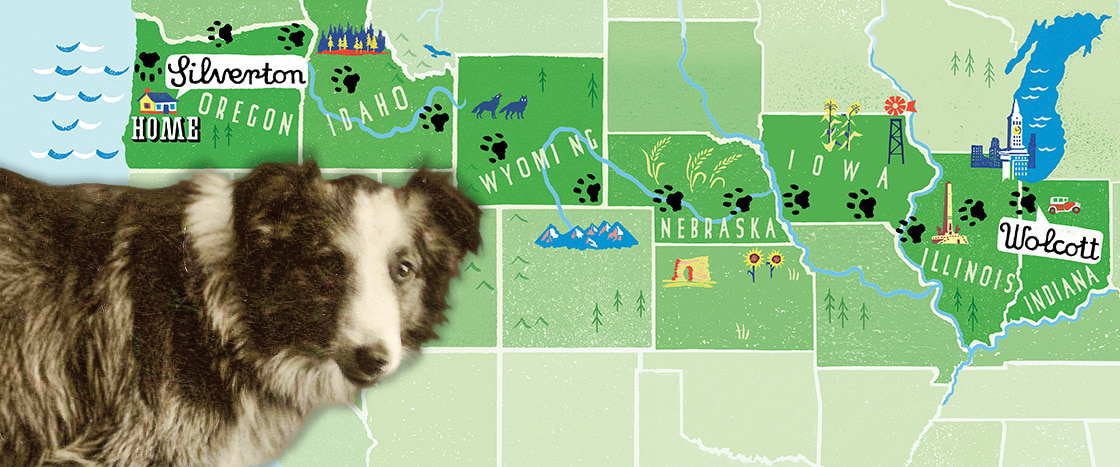A dog named Bobbie wandered through the streets of a small town in Indiana, lost and scared and alone.
It was August 15, 1923. A week and a half earlier, the collie had set off on a road trip with his owners, Frank and Elizabeth Brazier. They were heading east from their home in Silverton, Oregon, to visit family in Wolcott, Indiana—a journey across seven states, over more than 2,500 miles. From his cozy perch on the luggage at the back of the car, Bobbie watched as towering mountains, green forests, and grassy plains sped by.
Finally, after 10 days, the Braziers made it to Wolcott. But as they were filling up their car at a gas station, a gang of scruffy dogs suddenly appeared. Growling and barking, they chased Bobbie away from the station—farther and farther, until the collie was hopelessly lost.
Frank and Elizabeth drove around Wolcott for days, honking and calling Bobbie’s name. But there was no sign of their beloved dog. Eventually, heartbroken, the Braziers had to return to Oregon and break the awful news to their two daughters, Nova and Leona.
That’s how Bobbie found himself a stray dog in a strange town, desperately missing his family. Would he be able to find his way back home?
A dog named Bobbie walked through the streets of a town in Indiana. He was lost and scared and alone.
It was August 1923. A week and a half earlier, the collie had set off on a trip with his owners, Frank and Elizabeth Brazier. They were driving from their home in Silverton, Oregon, to visit family in Wolcott, Indiana. Their trip would cross seven states and more than 2,500 miles. From his seat at the back of the car, Bobbie watched as mountains and forests sped by.
Finally, after 10 days, the Braziers got to Wolcott. But while they were at a gas station, a group of dogs appeared. Growling and barking, they chased Bobbie away from the station. He ran until he was very lost.
Frank and Elizabeth tried hard to find Bobbie. But they couldn’t find their dog. Eventually, the Braziers had to return to Oregon and tell their two daughters, Nova and Leona, the bad news.
That’s how Bobbie became a lost dog in a strange town. Would he be able to find his way back home?

